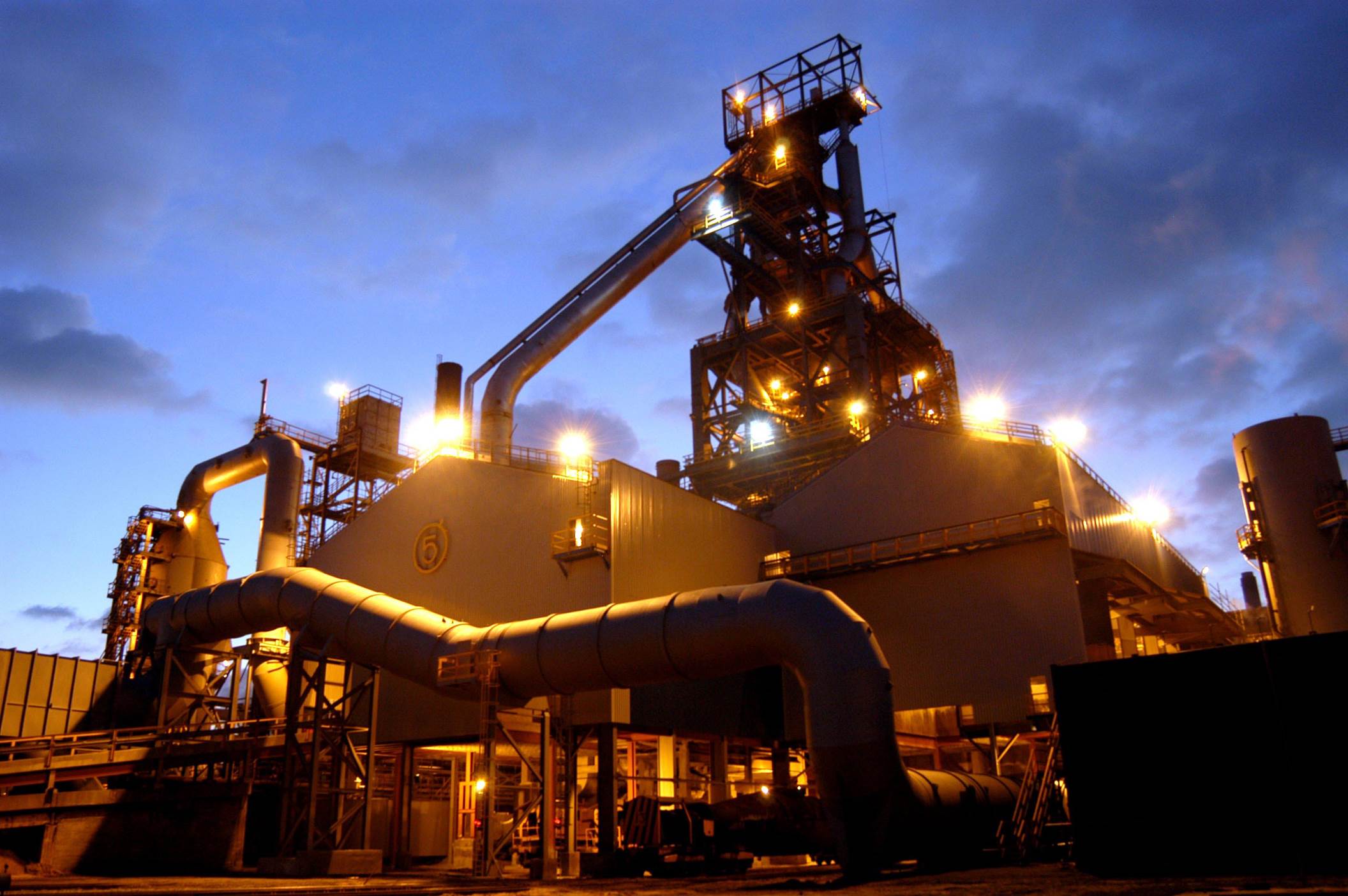ArcelorMittal, the world’s largest steel and mining company, is investing 87 million euro in a flagship pilot project in the harbor of Ghent. The Steelanol (steel + ethanol) project aims to use a patented process from LanzaTech to convert CO generated from steelmaking into ethanol, which can be used as biofuel, thus reducing the company’s environmental impact. The groundwork commenced in October 2015, and bioethanol production is expected to start mid-2017.
From CO to low-impact biofuel
The iron and steel industry uses carbon as a chemical reactant to reduce iron oxide to metallic iron. This process produces gases such as carbon monoxide (CO), carbon dioxide (CO2) and hydrogen (H2). Currently, the CO gas is burned and converted to heat and energy to be used within the plant. This results in the production of an average of 1.74 tons of CO2 per ton of steel. In total, the steel industry is responsible for 8 to 9 percent of the CO2 emissions in Belgium, or around 9 million tons per year (1,2).
Policies such as the 2015 Paris agreement, an ambitious plan to reduce greenhouse gas emissions, are gradually ensuring that such ecological impacts come at an ever-increasing economic cost. LanzaTech developed a process to significantly reduce the steel industry’s carbon footprint by converting CO and CO2 emissions to ethanol. In Ghent, the Steelanol project has the potential to reduce the CO2 emissions of ArcelorMittal by 1.3%, or 120,000 tons per year.
Gas fermentation has a fundamental advantage over first-generation technologies, as it allows for the use of non-food biomass to produce substantial volumes of an environmentally sustainable fuel. The CO2 emissions from this biofuel are between 50 to 70 percent lower than those produced by petroleum-based fuels, and around one-third lower than when steel mill gases are converted into electricity (3).
How does it work?
The patented LanzaTech technology platform is based on naturally occurring organisms that grow on gases rather than sugars, as in traditional fermentation processes. These acetogenic, gas-fermenting microbes are among the earliest life forms on earth. They evolved near hydrothermal vents on the ocean bed; the gases emitted by these vents are very similar to steel mill gas.
One of these microbes was isolated after an extended period of accelerated natural selection. The result is a microbial strain (Clostridium autoethanogenum) that is not a genetically modified organism, but rather a naturally selected strain that produces high levels of ethanol while being robust enough to grow on steel mill gases (4).
In the LanzaTech process, steel mill gases are cooled, cleaned and injected into a pressurized fermentation vessel containing proprietary microbes and liquid media. During their growth, the microbes consume CO, H2 and some CO2 while producing biomass and by-products such as ethanol. This biological process occurs with very high selectivity compared to the chemical ethanol production from such gases. The gas fermentation process tolerates a wide variety of impurities and pollutants, eliminating the need for extensive gas clean-up. After fermentation, the ethanol is easily recovered from the fermentation broth and purified by distillation.
The feasibility of the gas fermentation process was recently tested for several weeks at the ArcelorMittal site in Ghent. Using a mobile fermentation unit, the microbes were exposed to raw steel mill gas, which contains methane, oxygen and other trace contaminants. The two runs demonstrated significant microbial growth and ethanol production (5).
To a green future!
In recent years, genetic modification, metabolic engineering and process optimization techniques have been applied to gas-fermenting organisms. This has paved the way for gases to be used as feedstock for the commercial production of more valuable chemicals. These second-generation products include organic acids, industrial solvents and monomers for the production of plastics. Producing these chemicals from steel mill gas keeps fossil fuels in the ground and serves as a carbon sink.
It is clear that the potential of gas fermentation is not limited to the production of bio-ethanol. To evaluate some of the most promising gas fermentation processes, ArcelorMittal is currently collaborating with Bio Base Europe Pilot Plant, an open-innovation pilot plant located in the port of Ghent. The choice of location for this flagship factory is not just happenstance, but rather a direct result of more than half a billion euro in investments over the past ten years, and an ongoing commitment by the city and the port of Ghent to the bio-based industry. ArcelorMittal Ghent is located in what is now Europe’s biggest bio-energy cluster.
Once the commercial viability of the flagship plant is proven, the intention is to construct further plants across ArcelorMittal’s operations. In Europe, there is the potential to produce 500,000 metric tons of bioethanol from steel mill gas per year (6).
The Steelanol project is being supported by the European Union within the Horizon 2020 framework program. The project was granted a subsidy of 10.2 million euro to enable construction of the flagship facility and demonstration of the advanced biofuel technology on a commercial scale. It is estimated that the new bio-ethanol production facility will create 50 jobs. Upon completion in 2018, the estimated production capacity of the plant is 47,000 tons of ethanol per year, sufficient to fuel half a million cars with ethanol-blended gasoline.
References
(1) ArcelorMittal Corporate Responsibility Report 2014
(2) Total Belgian CO2 emissions: ± 100.000 kt/y
(3) Siemens and LanzaTech partner to transform steel mill off-gases into bioethanol – June 13th 2013
(4) Technical background on the LanzaTech process.
(5) Ethanol production successfully tested on live steel waste gas stream of ArcelorMittal Gent – January 13th 2016
(6) Partnership for breakthrough €87m biofuel production facility – August 1st 2014


